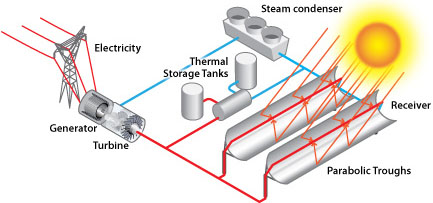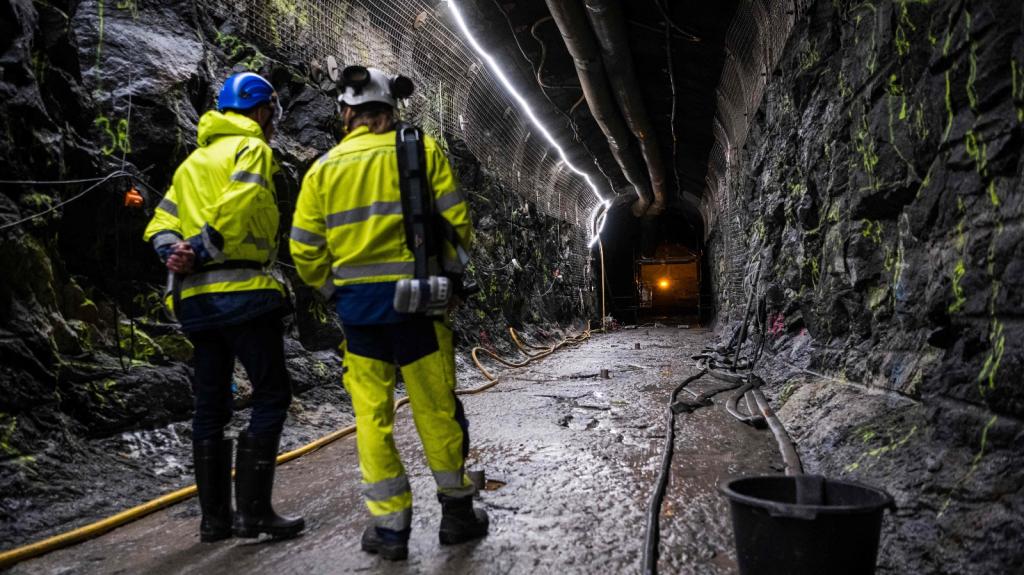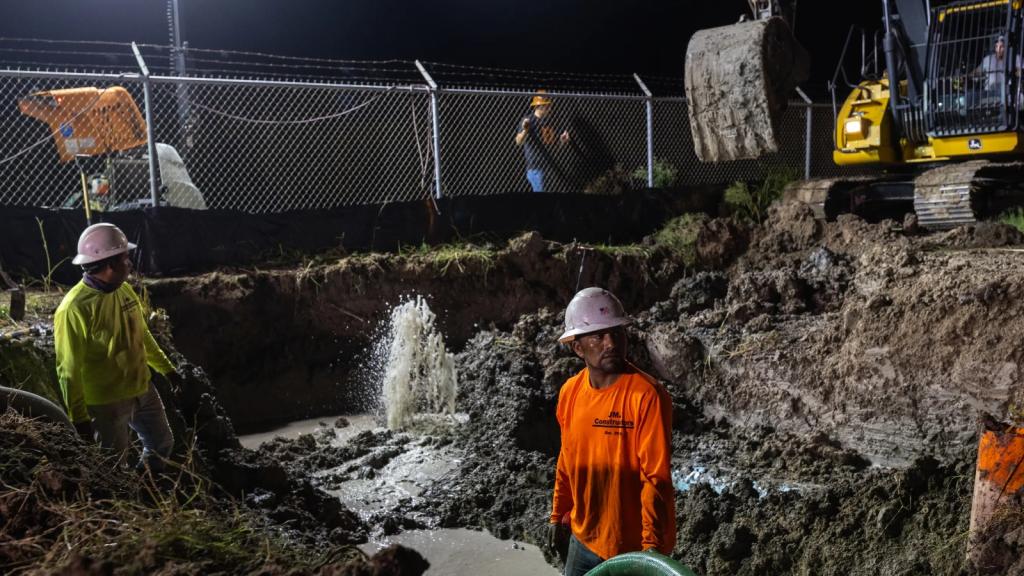What is the best evidence that concentrated solar thermal power (CSP) aka solar baseload is indeed a core climate solution with big near-term — and very big medium-term — promise? One of the country’s biggest companies, Lockheed-Martin, with 2008 sales of $42.7 billion, has jumped into the race to build the biggest CSP plant with thermal storage.
The CSP market was already exploding (see “World’s largest solar plant with thermal storage to be built in Arizona — total of 8500 MW of this core climate solution planned for 2014 in U.S. alone“). Now big players are getting on board, as Phoenix’s East Valley Tribune reports:
Arizona Public Service, Starwood Energy Group Global and Lockheed Martin announced plans Friday to build one of the world’s largest solar plants in the Harquahala Valley about 75 miles west of Phoenix.
The 290-megawatt plant will produce enough electricity to power more than 73,000 homes when it is completed in 2013, the developers said,
Called Starwood Solar I, the plant will be financed and owned by an affiliate of Starwood Energy and built and operated by Lockheed Martin. APS has agreed to take all of the electricity generated at the plant for distribution to its customers.
The plant will include 3,500 parabolic mirrors that will focus the sun’s heat onto tubes containing a heat-transfer fluid. The hot fluid will convert water into steam that will turn the plant’s turbines to generate electricity.
The Starwood plant is the second major solar project spurred by APS. In February 2008 the company signed an agreement with Abengoa Solar of Spain to purchase power from a 280-megawatt plant the Spanish company plans to build by 2011 at Gila Bend. But Abengoa has had trouble lining up financing for that project, and construction has not yet started.
APS is required by the Arizona Corporation Commission to obtain 15 percent of its electricity from renewable sources by 2025. The utility said it will be ahead of schedule to meet that requirement if Solana and Starwood are built.
First, I hope that the Department of Energy is going to use its loan program to help CSP companies like Abengoa get financing for CSP during this credit crunch (see “First Energy Department loan guarantee goes to … a solar manufacturer“).
But that is precisely why it is such a big deal for a company like Lockheed-Martin to enter this space. They bring credibility and confidence to potential financiers who might otherwise worry about the long-term viability of some relatively new and relatively small solar company.
And in case you were wondering who this mysterious Starwood Energy Group is, they are “a private equity investment firm based in Greenwich, CT, that specializes in energy infrastructure investments.” Apparently they have deep pockets: “Founded in 2005, Starwood Energy has committed to seven transactions representing nearly $4.9 billion in enterprise value.” Yes, this is the Starwood in Starwood hotels — the Chairman and CEO, Barry Sternlicht was “was Chairman & CEO of Starwood Hotels & Resorts Worldwide, Inc., a company he founded in 1995.” Gizmag reports that “Principals at Starwood Energy and its affiliates have developed or acquired 37 power generation and transmission projects to date, valued at more than USD$12 billion.” Be interested to know who those “affiliates” are, since it looks like these folks are going to be serious investors in clean energy.
When big players enter the market, there is the real prospect for lower financing and transaction and engineering costs.
 Significantly, this plant will have thermal storage:
Significantly, this plant will have thermal storage:
Solar I will be designed and built by aeronautics giant Lockheed Martin on about 1,900 acres, using a concentrating solar power system. This use mirrors and tracking systems to focus a large area of sunlight into a small beam. Solar I will have 3,500 parabolic mirrors to capture the sun’s rays. Heat captured by the mirrors and transferred will be used to convert water into steam. Just like a traditional power plant, the steam is then used to drive the plant’s turbines to create electricity. By storing energy captured during the day, up to six hours of back-up power will be available in a molten salt solution.
The key point is that the easiest way to deal with the intermittency of the sun is cheap storage — and thermal storage is much cheaper and has a much higher round-trip efficiency than electric storage. The ability to provide power reliably throughout the day and evening in key locations around the world (including China and India) is why CSP delivers 3 of the 12 – 14 wedges needed for “the full global warming solution.”
Kudos to Lockheed-Martin for getting onboard this fast-moving train.
Related Posts:
- World’s largest solar power plants with thermal storage to be built in Arizona
- Biggest CA utility contracts for world’s biggest solar power deal — 1300 MW solar thermal
- World’s second* largest solar plant to be built in Florida




